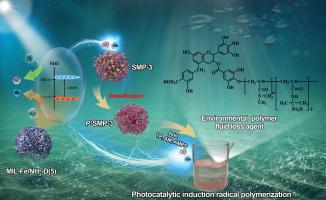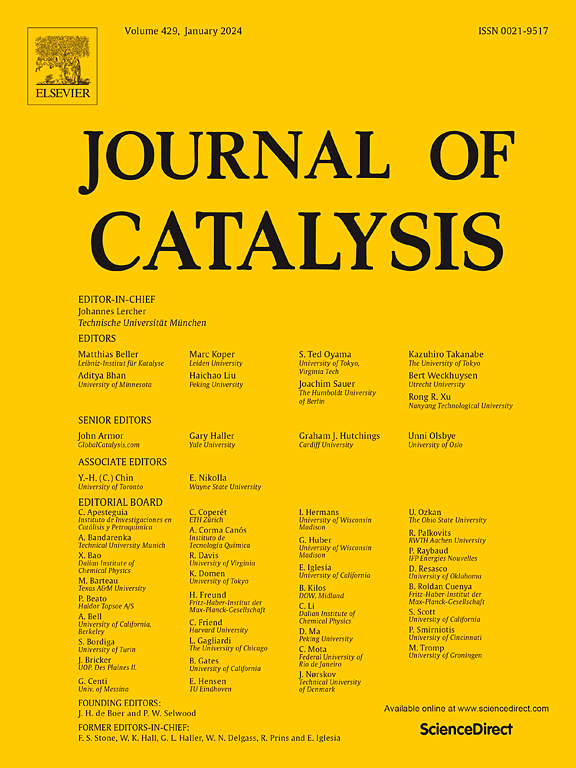One object (MOFs catalyst and light) with multiple purposes: The photocatalytic precursor detoxification and photo-induced green synthesis for fabrication of eco-friendly filtrate reducer
IF 6.5
1区 化学
Q2 CHEMISTRY, PHYSICAL
引用次数: 0
Abstract
With the increasingly stringent environmental rules around the world, new drilling fluid additives having high efficiency, non-biotoxicity and low cost by green synthesis strategy will be the developing trends. Herein, under acting on the prefabricated MIL-Fe/NH2-D(5) photocatalyst, the photo-induced detoxification of toxic sulfonated phenolic resin (SMP-3) was successfully completed for the first time, which further photopolymerized with tea polyphenol (TP), acrylamide (AM) and 2-acrylamido-2-methyl-1-propanesulfonic acid (AMPS) to prepare eco-friendly fluid loss agent LI-3. The homemade MIL-Fe/NH2-D(5) demonstrates dramatically increased light absorption in UV–VIS-NIR range with a significantly reduced band gap of 1.68 eV, and exhibits excellent efficiency of separating interface charges with rapid transfer dynamic. As expected, LI-3 filtrate reducer effectively controls the rheology of slurry, and possesses excellent loss-reducing properties even at high temperatures and high salinity conditions. Compared with base mud, the filtrate volumes of LI-3/BT-WBDFs containing 2.0 % LI-3 are reduced by 83.91 % and 83.42 % before and after aging at 180 °C, respectively. Finally, the possible mechanisms involved are explored. Particularly in both photo-induced detoxification and green synthesis periods, the photo thermal conversion based on localized surface plasmon resonance (LSPR) ensures mild conditions with energy saving.


求助全文
约1分钟内获得全文
求助全文
来源期刊

Journal of Catalysis
工程技术-工程:化工
CiteScore
12.30
自引率
5.50%
发文量
447
审稿时长
31 days
期刊介绍:
The Journal of Catalysis publishes scholarly articles on both heterogeneous and homogeneous catalysis, covering a wide range of chemical transformations. These include various types of catalysis, such as those mediated by photons, plasmons, and electrons. The focus of the studies is to understand the relationship between catalytic function and the underlying chemical properties of surfaces and metal complexes.
The articles in the journal offer innovative concepts and explore the synthesis and kinetics of inorganic solids and homogeneous complexes. Furthermore, they discuss spectroscopic techniques for characterizing catalysts, investigate the interaction of probes and reacting species with catalysts, and employ theoretical methods.
The research presented in the journal should have direct relevance to the field of catalytic processes, addressing either fundamental aspects or applications of catalysis.
 求助内容:
求助内容: 应助结果提醒方式:
应助结果提醒方式:


